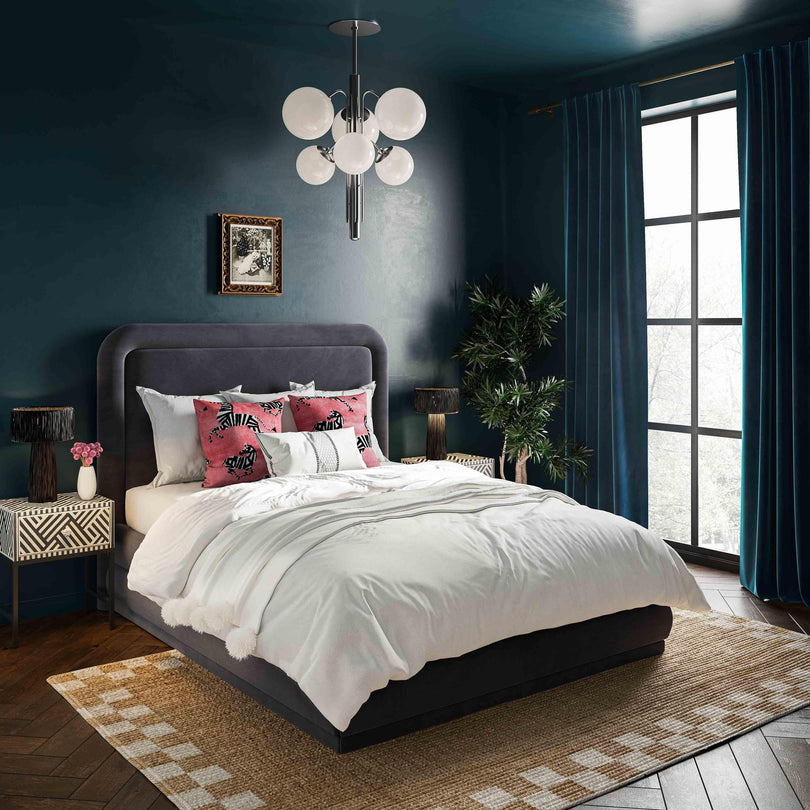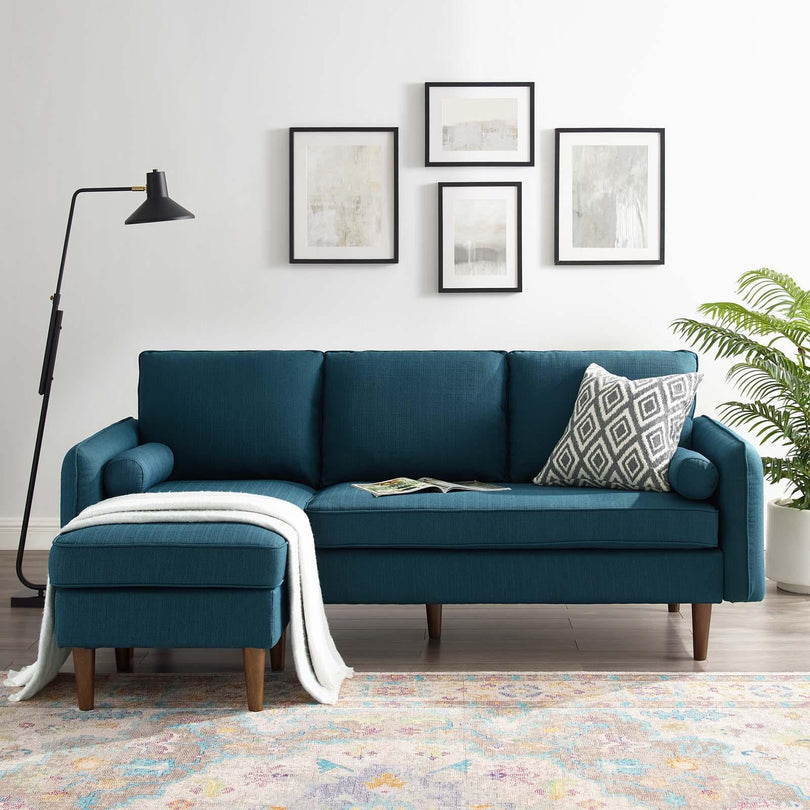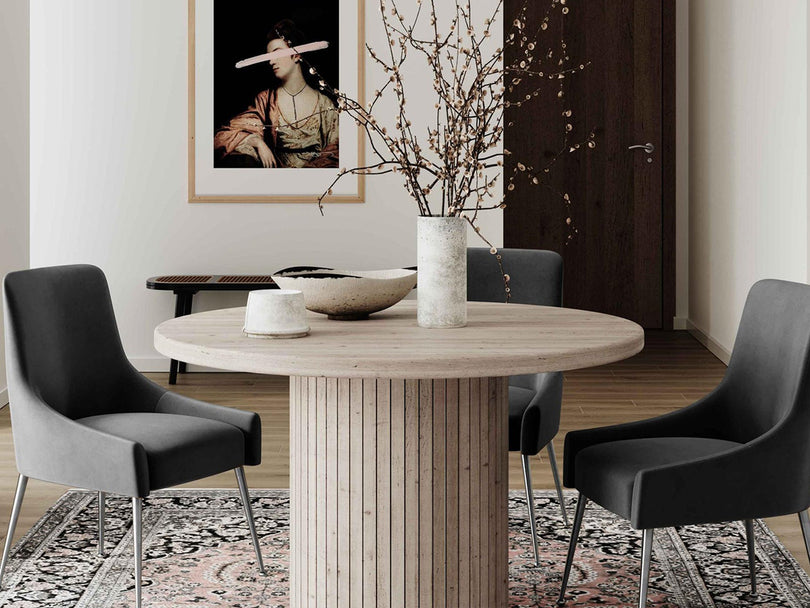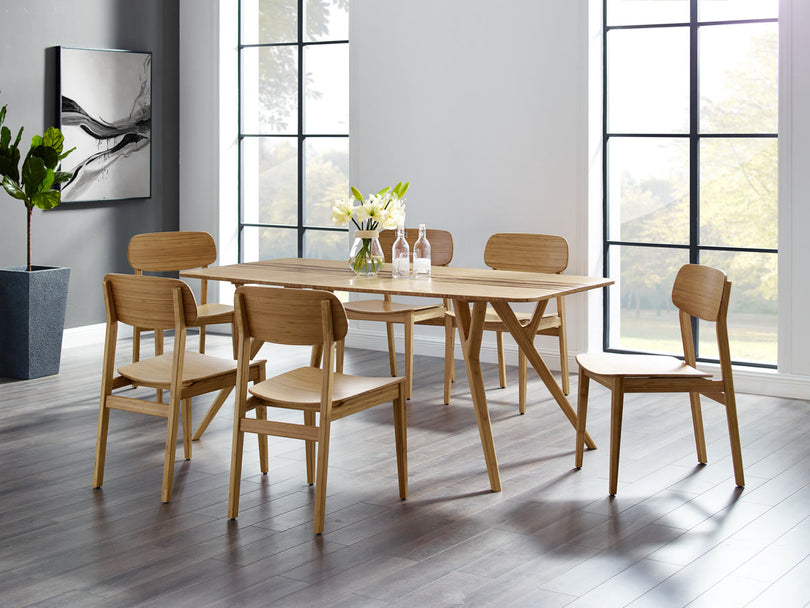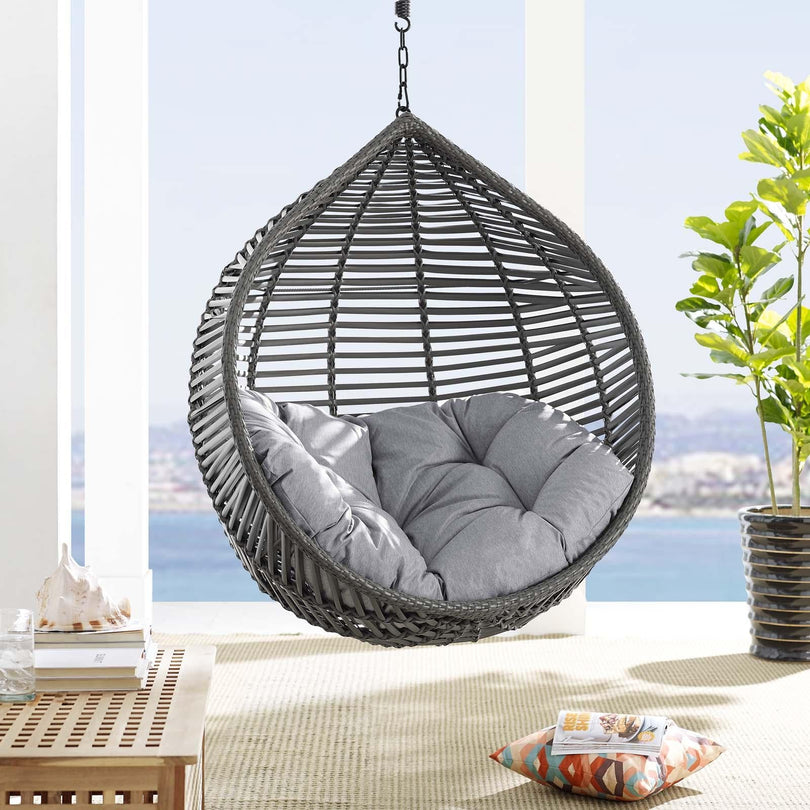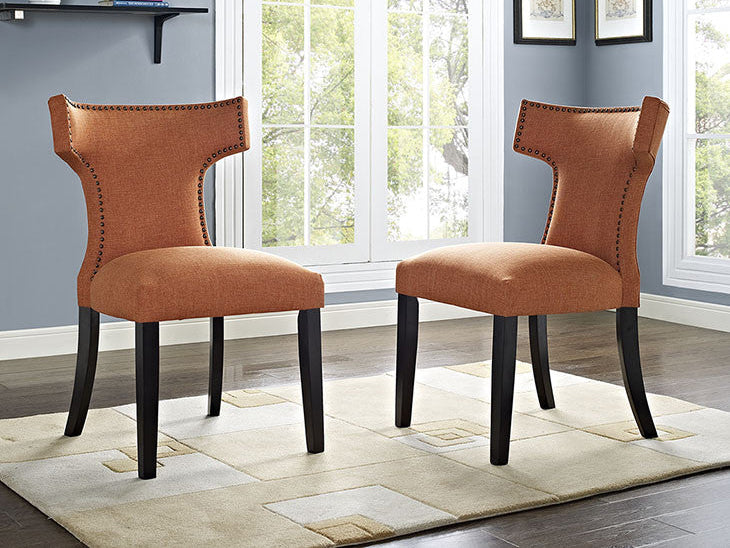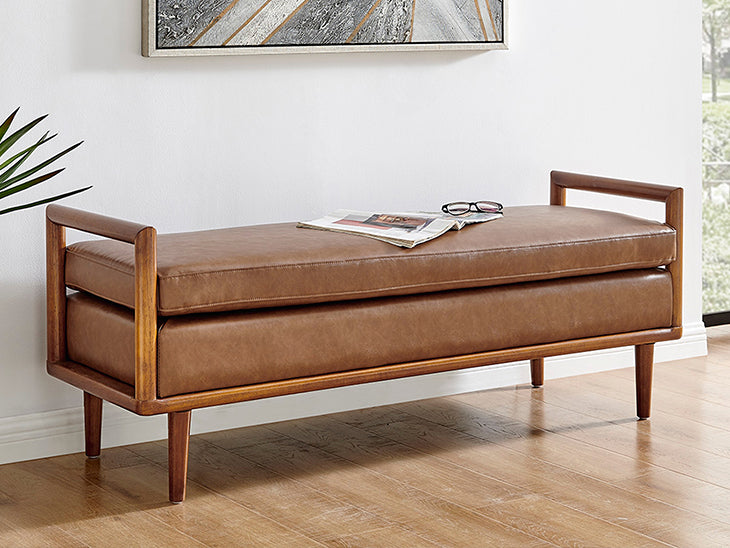Welcome to a journey through the future of the furniture industry. The art of furniture making has continuously evolved since the dawn of civilization, offering not just functional solutions, but also an aesthetic expression of our individual and collective taste. However, on the brink of 2023, we stand at the edge of a revolution in this age-old industry. As we delve into the article, you'll find insightful facts and figures, forecasts, growth rates, and unfolding trends. Together, this will paint a comprehensive picture of the global and regional furniture markets in 2023, revealing what lies beyond the horizon in the furniture industry. Whether you are an industry insider, an interior design enthusiast, or a curious reader, this is an invitation to explore the DNA of your living spaces in the making. Let's embark on this fascinating journey together.
Overall Growth of Global Furniture Market
The furniture industry has witnessed a surge in its market over the years. Furniture is more than a mere accessory to our lives; it's a fundamental necessity. Thanks to this fact, along with breezy home loans, technological evolutions and several other factors, we continue to witness significant growth in the global furniture market.
The Market Size
Let's delve into statistics to understand the market size better. The global furniture market scale was recorded at a whopping USD 516.66 billion in 2022 and is projected to enhance to USD 541.52 billion in 2023. These numbers stress the ceaseless upsurge the industry relishes globally.
Projected Growth to 2032
The steady growth of the furniture industry appears to be evident as we enter 2023 and the projections for the future are promising. By 2032, market size is set to jump to an exceptional USD 780.43 billion. This ascension in market size is congruous with the evolving preferences and the advent of convenient online marketplace platforms that continue to fuel the industry’s growth.
Compound Annual Growth Rate (CAGR)
While market size offers valuable insight, it’s necessary to note the Compound Annual Growth Rate (CAGR) which conveys the yearly growth rate over a specified period. The global furniture market is anticipated to reach USD 939.7 billion by 2027, which means the market is growing at a sustained CAGR of 6.8%.
In conclusion, the data is a testament to the relentless expansion that the global furniture market has been exhibiting. This gentle giant, often backed with robust numbers, is a sector that continuously meets the rising demands and evolving tastes of consumers world over. The growth of the furniture market is assured, as the requirement for quality home, office, and institutional fixtures will never cease. Only its form may change with the changing times, fueling its growth further in the future.
Growth of Furniture Market in United States
Imagine a future where every American home is adorned with the latest, trendiest, and most comfortable furniture, marking a transformative blend of aesthetics and functionality. It's no fantasy, but rather the inescapable reality looming on the horizon, reflecting the robust growth of the furniture market in the United States. The numbers radiate optimism too, with a whopping growth projected at 3.98% from 2024 to 2028 - an economic boom that will catapult the market volume to an impressive USD 295.4B by 2028.
To fully appreciate this growth narrative, let's delve deeper into the various factors contributing to this promising momentum.
First on the list is, undoubtedly, the real estate uptick. American households are increasingly choosing spacious homes, both in urban centers and suburban landscapes. This trend opens up a world of opportunities for the furniture industry to assert its innovative designs and pioneering solutions to cater to a diverse, increasingly receptive audience.
Secondly, the rise in disposable income has played a major role in steering the growth trajectory. With more to splurge on home improvement and interiors, Americans are now willing to invest in premium furniture pieces that embody their individual personalities and vivacious lifestyles.
Not to forget the digital revolution. With online marketplaces bridging the gap between retailers and consumers, shopping for home accents has never been so hassle-free. E-commerce platforms have indeed democratized furniture shopping, allowing people to explore global trends right from their living rooms.
Echoing this growth story are socio-cultural shifts. A renewed emphasis on home spaces as extensions of one's personality has led to a rising demand for custom furniture. Right from personal study rooms to open kitchen formats, every nook and corner of American homes is being thoughtfully curated with signature pieces.
While these drivers paint a vibrant growth picture, they also pose significant challenges. As the marketplace mushroom, competition gets stiffer, and differentiation becomes the strategic imperative. Still, as history has shown us, where there are challenges, opportunities bloom.
The future of the furniture market in the United States promises to be an interesting one, indeed. Shaped by various factors and driven by innovative market players, it is poised to become a vital, dynamic part of the larger consumer goods landscape. Frolicking in this fervor of growth, let's witness how the industry shapes the homes and hearts of its consumers. It's not just furniture; it's about carving memories and making every corner come alive with stories. And therein lies the real joy of growth and transformation.
Growth of Furniture Market in India
In recent years, India's furniture market has experienced a remarkable growth trajectory. With an expected Compound Annual Growth Rate (CAGR) of around 12.91% from 2020 to 2024, the industry is becoming a formidable player in the global market. The burgeoning economy paired with increasing urbanization, expanding consumer base, and rise of digital mediums contribute significantly to this enticing upsurge.
India's furniture market is an evolving landscape, spurred on by several strong influencers:
- Rapid Urbanization: As more people move to urban areas in search of better opportunities and living conditions, the demand for furniture increases. City dwellers and new homeowners alike require trendy and comfortable furniture to adorn their living spaces.
- Rising Disposable Income: With a boost in the economy, many Indians now have a higher disposable income. This economic change has provoked a higher expenditure on lifestyle and home decor, including furniture.
- Growing Consumer Base: There is a mounting consumer base due to the ongoing population growth. An increasing demand for home furniture, office furniture, and even outdoor furniture comes partially from this sector.
- Digital Developments: Online shopping has revolutionized the furniture industry. Nowadays, a significant proportion of consumers prefer online purchases. They can browse multiple catalogues, compare prices, and read reviews before buying, all from the comfort of home.
However, this exciting growth doesn't mean the journey's without challenges. India's furniture market grapples with many factors like lack of skilled labor, economic instability, and an unorganized market structure. These hurdles highlight the need for sustainable solutions to keep the positive momentum rolling.
The upcoming forecast for India's furniture market looks bright and full of potential. By taking into consideration these upward and downward influences, key players in the market can strategically plan for future growth. It's an exciting era for the furniture industry in India, with a promising horizon on the global stage.
Wooden Furniture Market Growth
Behold the world of wooden furniture, an industry poised on the precipice of considerable growth! As strongly set as the sturdy oak table or the meticulously crafted mahogany armoire, the global wooden furniture market is projected to surge ahead in leaps and bounds. To casually browse the market numbers is to embark on an exhilarating journey into a market sector of increasing importance and potential.
Let's delve a little deeper and unmask this titan's figure. It's predicted that the wooden furniture business will grow from a notable USD 99.1B in 2022 to a commendably larger USD 105.9B in 2023. This represents an impressive Compound Annual Growth Rate (CAGR) of 6.90%. The forecast speaks eloquently about the robust health of the wooden furniture sector.
Balancing the spellbinding silhouette of a well-designed wooden furniture piece with the intricate details that contribute to its functionality is the key in this market. Why is this traditional material reasserting its relevance now?
- Sustainable Choices: With the world striving to make more eco-friendly choices, wood emerges as the front-runner. As a resource that can be responsibly harvested and replenished, wood has resurrected itself as a favored material.
- Versatility: Wood offers an unmatched versatility when it comes to furniture design. It seamlessly blends with a multitude of decor styles - whether you're aiming for a minimalistic modern aesthetic or evoking the grandeur of a traditional era.
- Durability: Wooden furniture stands the test of time. It offers durability and strength, which makes it a smart investment. It presents an appealing blend of longevity, aesthetics, and value.
Suffice to say, driven by these factors, this growth in market size doesn't seem like a fleeting trend. Rather it signals the arrival of a substantial shift. A quote attributed to Abraham Lincoln comes to mind - "The best way to predict the future is to create it". The wooden furniture market seems to be doing just that, crafting a future sure to take it to new heights.
Contract Furniture Market Growth
In the ever-evolving world of interior design, the contract furniture industry is witnessing significant growth. This sector, which supplies furniture for commercial spaces, is scaling new heights, pushing the boundaries of design and function, while concurrently expanding in size. The global contract furniture market size looks promising, projected to grow at an impressive CAGR of over 5% from 2023 to 2032. This growth can be directly attributed to the rapid advancements in the commercial sector.
But what exactly is fueling this accelerating market momentum? Let's explore the key driving forces behind this bullish market outlook.
Undeniably, the pace of commercialization globally is a key factor. With an upsurge in office spaces, hospitality venues, and healthcare facilities, the demand for high-quality, durable, and aesthetically appealing furniture is soaring. Whether it's high-tech workplaces seeking ergonomic office chairs or hotels requiring on-trend seating arrangements, the demand is diverse and expanding.
Then comes innovation in manufacturing and design techniques. Today, the contract furniture industry is moving past mass-produced items and dynamically stepping into customization. Businesses are increasingly seeking bespoke furniture design solutions that reflect their brand ethos while maintaining the function. This has propelling manufacturers to invest in advanced technologies, design methodologies, and skilled personnel, further contributing to market growth.
Notably, sustainability trend is another major influencer. As green is the new black in most industries, the pressure is up for manufacturers to produce environmentally considerate contract furniture. Ways of meeting this demand include the use of sustainable materials, energy-efficient manufacturing processes, and recyclable end-products to reduce environmental impact.
However, as promising as it may seem, caution accompanies optimism. This industry also faces its share of challenges, including intense market competition, fluctuating material costs, and supply chain disruptions due to ongoing global events.
In a nutshell, it's an exciting time to follow the development of the contract furniture market. While the challenges may be real, the potential for innovations and growth is undisputed. As this market continues its forward march, expect to see even more impressive advancements in furniture design, manufacturing techniques, and sustainability ventures. In these transformations and opportunities lies the promising future of the contract furniture market.
Increase in Furniture Orders
As you walk around your house, you might notice that certain rooms need a little love - perhaps a new coffee table or a chic bookshelf. You are not the only one. The past few months have seen a significant shift in the home decor sector, even mirroring some pre-pandemic spikes in demand. In an exhilarating twist, new orders in the residential furniture sector saw an impressive 23% increase in June 2023 compared to the same period in 2022. Let's dive into this encouraging trend.
Just imagine the scenario – numerous people scrolling through online furniture catalogs, envisioning their ideal living space, and transforming their homes into personal sanctuaries. Could this rise in residential furniture orders be attributed to the increasing number of people investing in their domestic environments? Or is this trend a result of the ongoing global recovery, with industries steadily picking up speed? There could be numerous underlying factors. Let's explore.
Generally, the furniture industry has a seasonal rhythm, with peaks during certain months. However, the positive uptick we're addressing seems to be the result of several other factors. Here are some worth mentioning:
- A significant population has resorted to working from home, prompting the necessity for optimizing home spaces.
- The impact of social media trends that highlight aesthetic home interiors.
- The global economy's stabilizing health, with consumers possessing greater buying power.
Understanding the nuances of this upward trend is invaluable for both manufacturers and consumers. For businesses, this signals a favorable climate for growth, while for customers, a bustling market could mean a larger, more varied selection of products to beautify their living spaces.
"The appeal of home comfort is inherent in us. Thus, the surge in furniture orders just points towards this need for warmth and personalisation in our dwellings," says an industry expert.
While this 23% increase might be remarkable, it's still essential to evaluate how this influences the market's landscape. As far as trends go, this indeed seems to be a rising one, indicating a flourishing residential furniture sector. So, whether it's a sleek office chair you've been eyeing or a rustic kitchen table that speaks to your style, there's no time like the present to enhance your abode.
Conclusion
As we stand on the brink of 2023, one thing is clear - the future is bright for the furniture industry. From increased market growth rates globally and in particular regions like the United States and India, to a surge in demand for wooden and contract furniture, the trends are showing us that consumers are craving innovative and stylish furniture designs.
As leaders in modern furniture, Minimal & Modern stands ready to meet these market demands with our curated collection of minimalist designs. Our furniture pieces not only add sophistication and elegance, but also adapt seamlessly to the current trends and future directions of the furniture industry.
Are you ready to modernize your space with trendsetting furniture? Now, is an exciting time to update your interiors with stylish pieces. Head over to our website at Minimal & Modern to explore our full collection and keep your home or office ahead of the trend curve.
Whether it is the living room that needs a sleek coffee table, an office that could use an ergonomic chair, or a bedroom longing for a minimalist bed frame, Minimal & Modern has you covered. And as successful market trends have indicated, minimalism is not just a fleeting style. It's here to stay, influencing interior design landscapes now and well into the future.
Frequently Asked Questions
-
What are some upcoming furniture trends in 2023?
Some upcoming furniture trends in 2023 include sustainable and eco-friendly materials, modular and multifunctional furniture, minimalist designs, smart furniture with integrated technology, and a focus on comfort and functionality.
-
Will sustainable materials play a significant role in future furniture trends?
Yes, sustainable materials are expected to play a significant role in future furniture trends. With increasing awareness about environmental concerns, consumers are leaning towards furniture made from recycled or renewable materials, such as reclaimed wood, bamboo, or recycled plastic.
-
Why is modular furniture becoming popular?
Modular furniture is becoming popular because it offers versatility and flexibility. It allows users to customize their furniture arrangements and adapt them to different spaces and needs. With limited living spaces becoming more common, modular furniture provides efficient solutions.
-
What is the significance of incorporating technology into furniture?
Incorporating technology into furniture provides added convenience and functionality. Smart furniture can include built-in charging stations, wireless charging, adjustable lighting, integrated speakers, and even IoT connectivity, enhancing the overall user experience.
-
Are bold colors and patterns expected to be popular in 2023 furniture trends?
While bold colors and patterns can add personality and visual interest to furniture, there is a growing preference for minimalist designs in 2023. Clean lines, neutral colors, and simple aesthetics are expected to dominate as they offer a timeless and versatile appeal.

